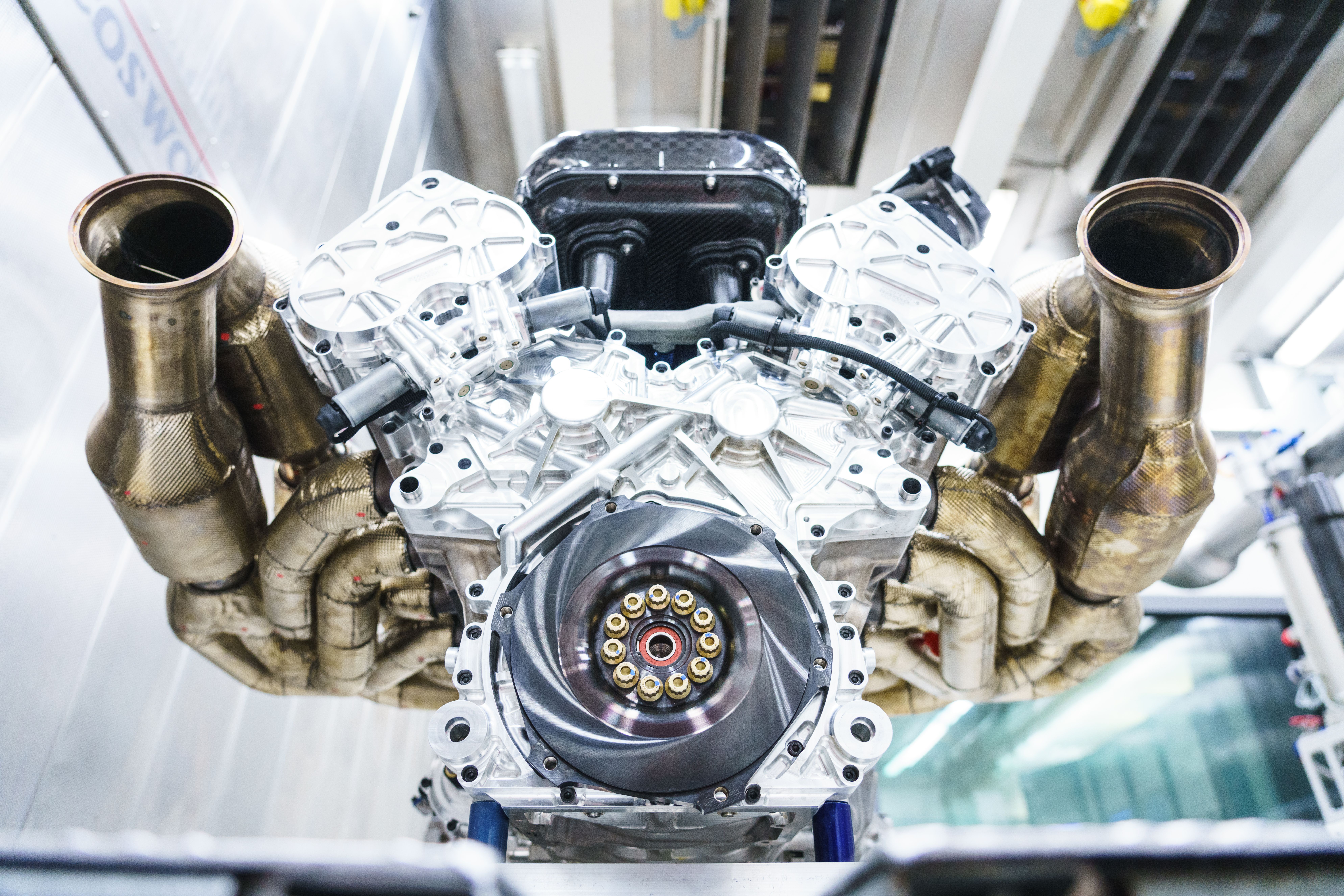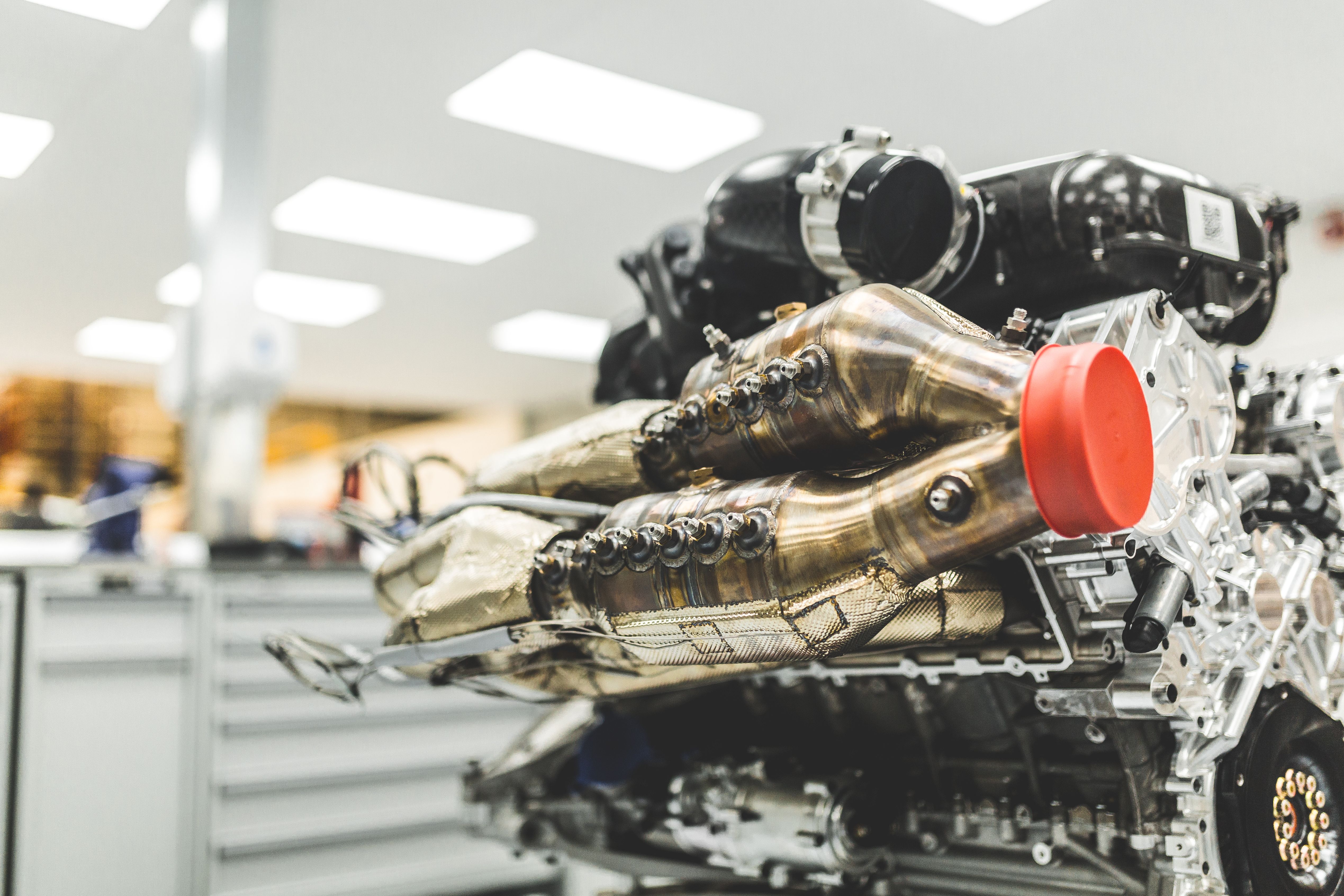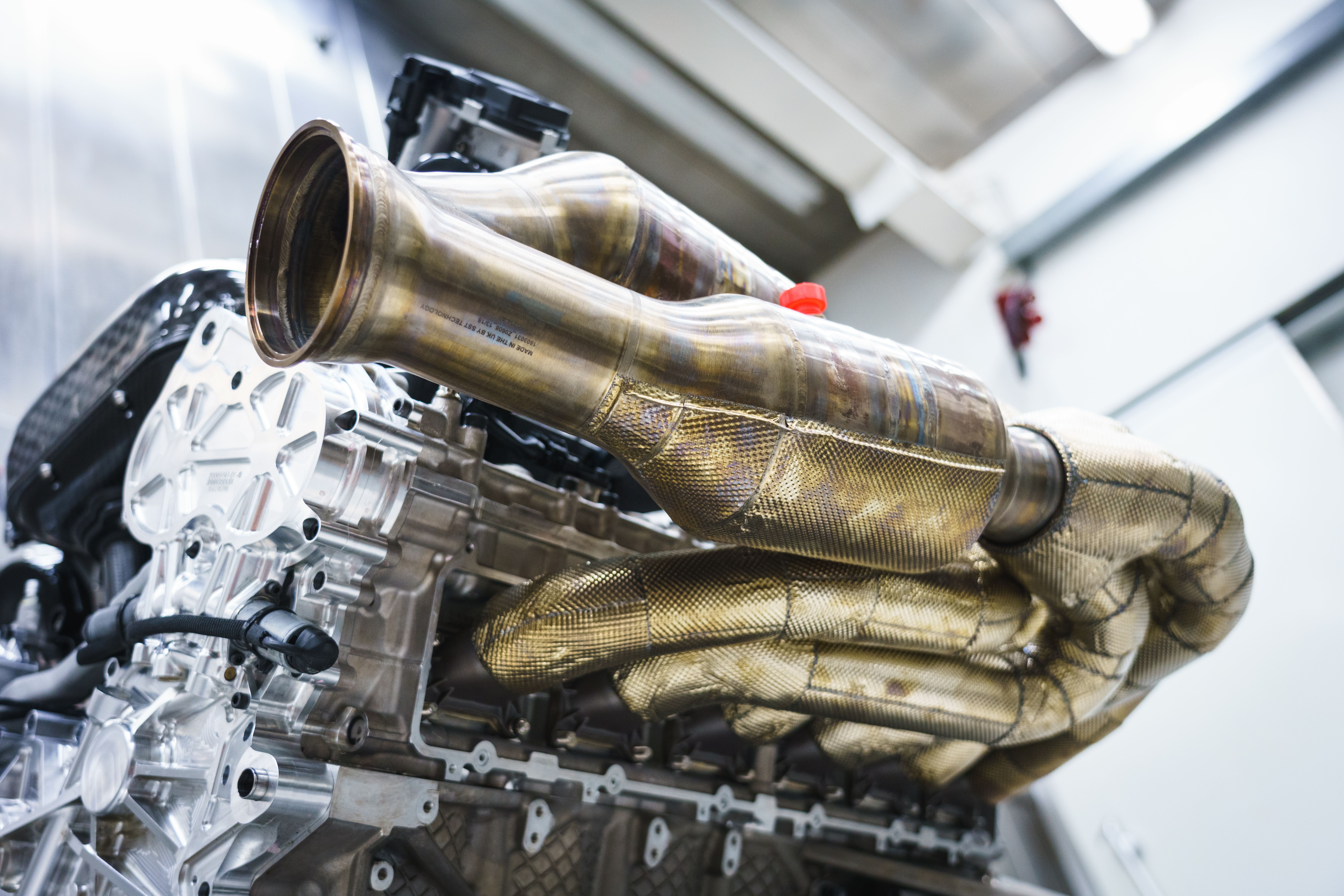Hypercars are getting crazier and crazier with every successive generation, and the new Aston Martin Valkyrie is a perfect example of just how wild the current crop of top-shelf performers truly are. A lot of the Aston’s insanity comes down to the beating mid-ship heart of the machine, and now we’re getting a fresh take on what makes it tick.
Taking A Peek Under The Valkyrie’s Hood
On to the nerdy stuff. The engine in question here was created by the legendary British automotive engineering company known as Cosworth, which sourced both development techniques and material technology from its successful Formula 1 efforts to create it.
This fits well with the overarching theme, as the rest of the Valkyrie was also developed with input from Adrian Newey, another name with a history of Formula 1 fame.
The specs on the Valkyrie’s engine are just insane. There’s a 65-degree arrangement for the cylinder banks and a V-12 configuration with 6.5 liters of displacement, but check this out - redline is set at a mind-boggling 11,100 rpms, with a maximum of 1,000 horsepower created at 10,500, offering up 153.8 horsepower per liter. Twist is measured at 740 Nm (546 pound-feet) of torque at 7,000 rpm.
The engine is also a “fully-stressed” part of the chassis, connecting the front wheels to the rear of the vehicle and acting to keep the car feeling solid through the corners, even when the aero-enhanced grip is threatening to tear the driver’s face off.
That makes it more or less in line with the full F1-spec Cosworth 3.0-liter V-10, which weighs 97 kg (213 pounds) and, as Aston points out, would tip the scales at 210 kg (463 pounds) if scaled up to 6.5 liters. Granted, that’s a bit of an apples to oranges comparison, but it’s definitely quite impressive all the same.
Aston also says it “actively avoided extreme material alloys” in the engine’s development, as they “are so new that material properties over time are unproven.” However, even without “extreme” materials, the stuff that went into the Valkyrie’s ’12 seems like it’s still straight out of fiction. For example, the machined internals include titanium connecting rods and even “F1-spec” pistons.
The crankshaft is a good example of the level of attention that each component received during the build process. The crank was billet machined from a solid steel bar that had 80 percent of the original piece of metal carved out of it, and when it’s all said and done, the final component weighs in at 50 percent of the crank used in the Aston Martin One-77.
Aston also kept it boost free, eschewing the much more common move of adding a double dose of turbocharging to the mix. The idea was to create the ultimate powerplant for a driver’s car application, and the free-revving, low-end torque response of an all-atmosphere engine is unquestionably the best fit for that criteria.
“To anyone with a drop of petrol in their blood, a high-revving naturally aspirated V-12 is the absolute pinnacle,” said Aston chief Dr. Andy Palmer. “Nothing sounds better or encapsulates the emotion and excitement of the internal combustion engine more completely.”
That said, hybrid assistance still seems to fall within that range of desirable characteristics. Unfortunately, Aston has yet to spill the beans on the electrified side of the Valkyrie’s powerplant, so we’ll just have to wait and see how it pans out when the automaker is ready to tell us more.
As for acceleration specs, the Valkyrie should hit 60 mph in about 2.5 seconds and rage on to a top speed of 250 mph. Curb weight should hit around 2,270 pounds. Production is limited to just 25 units, each of which cost a whopping $3.2 million.
Further Reading
Read up on everything we know about the 2019 Aston Martin Valkyrie
Read our full review of the Aston Martin One-77.



